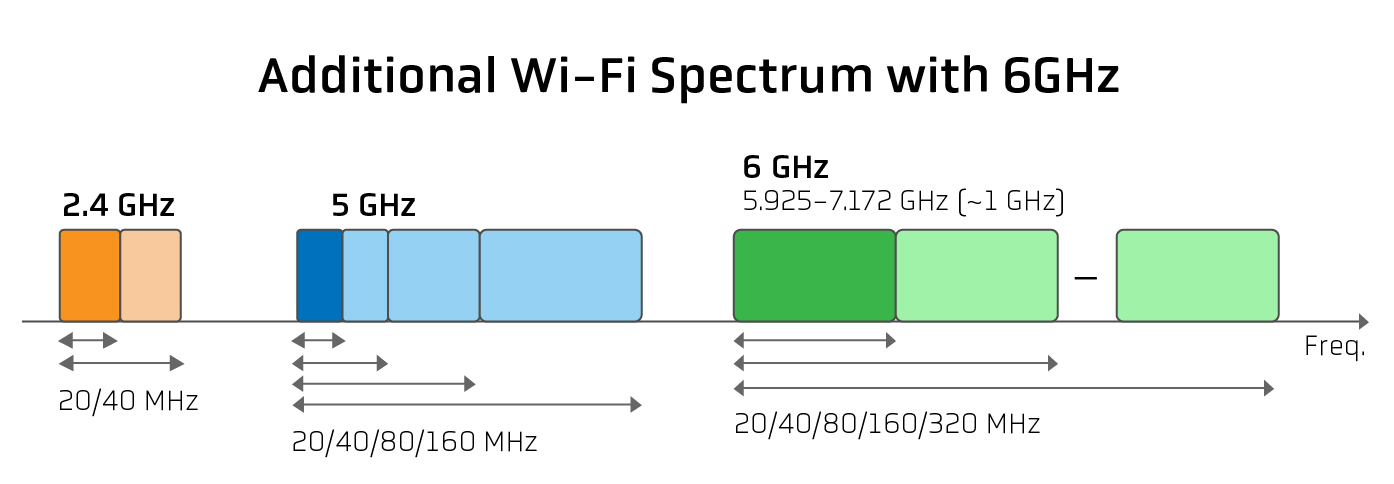
6 GHz: It's About Time
Published on March 21, 2019

Wi-Fi, one of today's most ubiquitous wireless technologies, has once again reached the point where it's necessary to innovate for its own future. The problem that Wi-Fi has is a good one to have: widespread adoption and near-universal usage means new solutions are needed to reduce crowding, keep up with data throughput needs, and serve a new generation of wireless applications.
Wi-Fi is still a growth technology, especially in public spaces. Cisco estimates there will be 549 million public Wi-Fi hotspots by 2022, nearly four times as many as the 124 million found in 2017. And this proliferation comes with an increase in demand for speed and bandwidth. Both the 2.4 GHz and 5 GHz bands, which Wi-Fi occupies, have increasingly become saturated with wireless traffic. And in crowded venues, the results include poor connections, poor Wi-Fi experience, and disappointed users.
The latest solution is on its way in the US: a newly available range of frequencies in the 6 GHz band will provide more channels, wider channels, and an overall better Wi-Fi experience. On October 23 of 2018, FCC commissioners voted unanimously to expand the 6 GHz band to Wi-Fi devices. The 6 GHz band (from 5.925 GHz to 7.125 GHz) provides a wide range of clean, uncongested RF spectrum that enables more non-overlapping Wi-Fi channels. It's anticipated that 160 MHz wide channels would be the norm, yielding blazing fast traffic at over 3Gbps. This doubles the frequency spectrum available for Wi-Fi, creating greater opportunity to connect more devices in the same space, and to dramatically improve the Wi-Fi experience.
This change is so far only proposed in the US by the FCC, but if the past is an indicator, other regulatory bodies are likely to follow suit where possible. The EU, for example, has allocated portions of the 6 GHz spectrum to other uses, but could expose as much as half of that range for Wi-Fi purposes. And it will take time for these changes to take place. Current hardware doesn't support 6 GHz operation, and has yet to officially be specified in the upcoming Wi-Fi standard (802.11ax, also known as Wi-Fi 6). 6 GHz operation likely won't arrive in the US until 2022 at the earliest.
There are a lot of unknowns: how other regulatory bodies will act, what rules will apply, if the 6GHz band will be bound to only the 802.11ax standard, and how soon the first hardware will arrive. Ezurio is following developments closely, and is eager to be a part of creating the Wi-Fi ecosystem of tomorrow.
Learn more about Ezurio's (formerly Laird Connectivity) Wi-Fi Antennas, and our Wi-Fi + Bluetooth modules.
 Laird Connectivity is now Ezurio
Laird Connectivity is now Ezurio